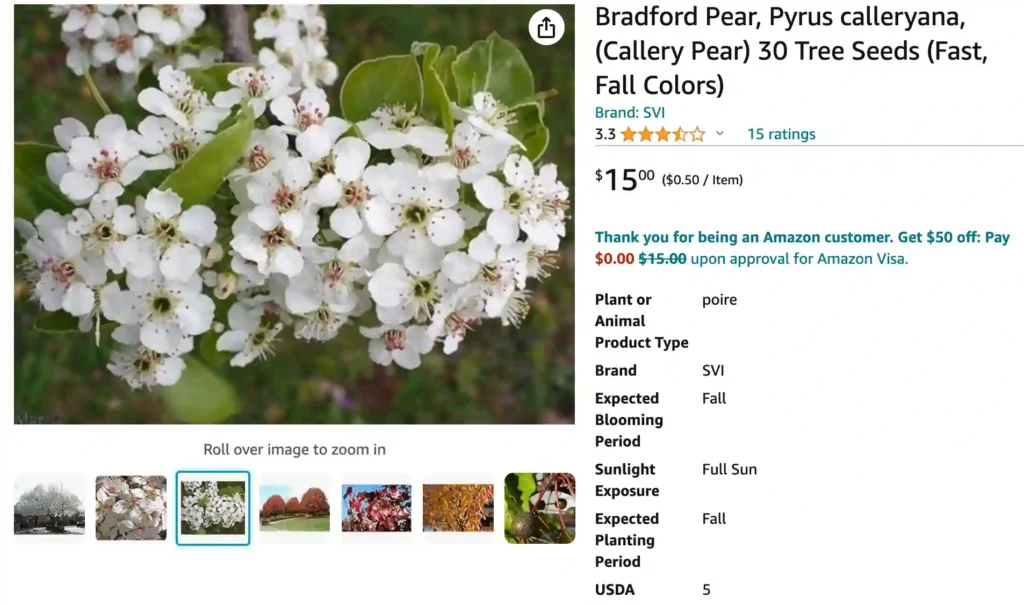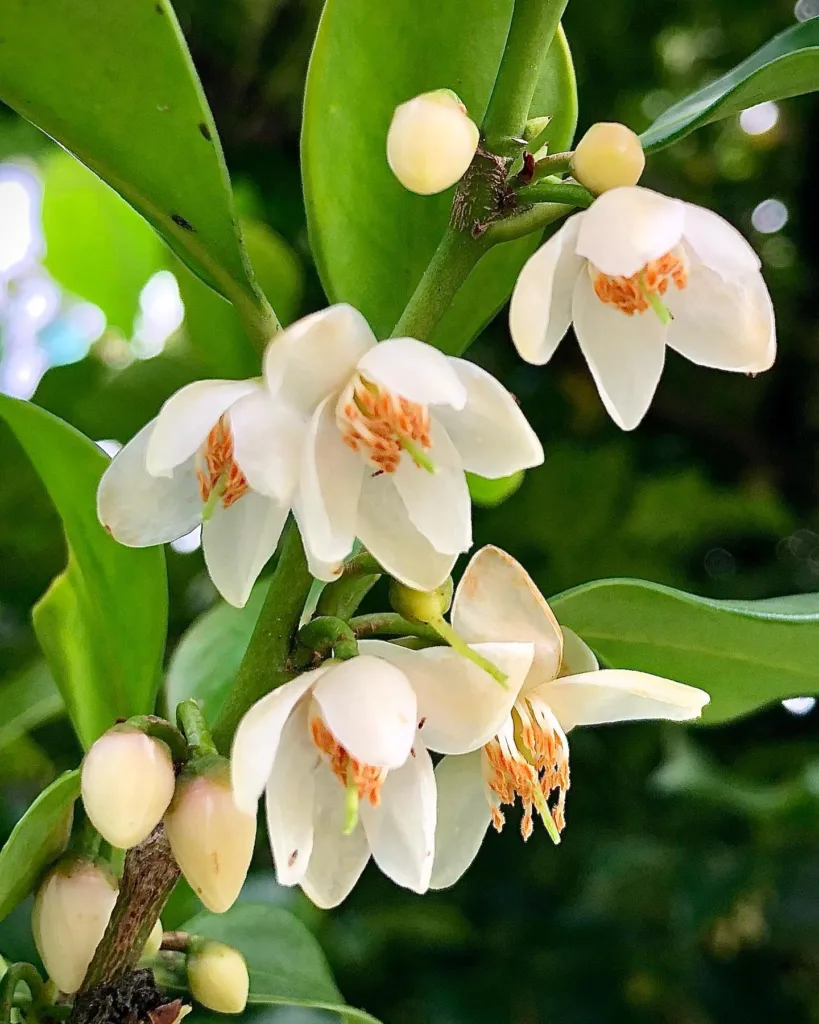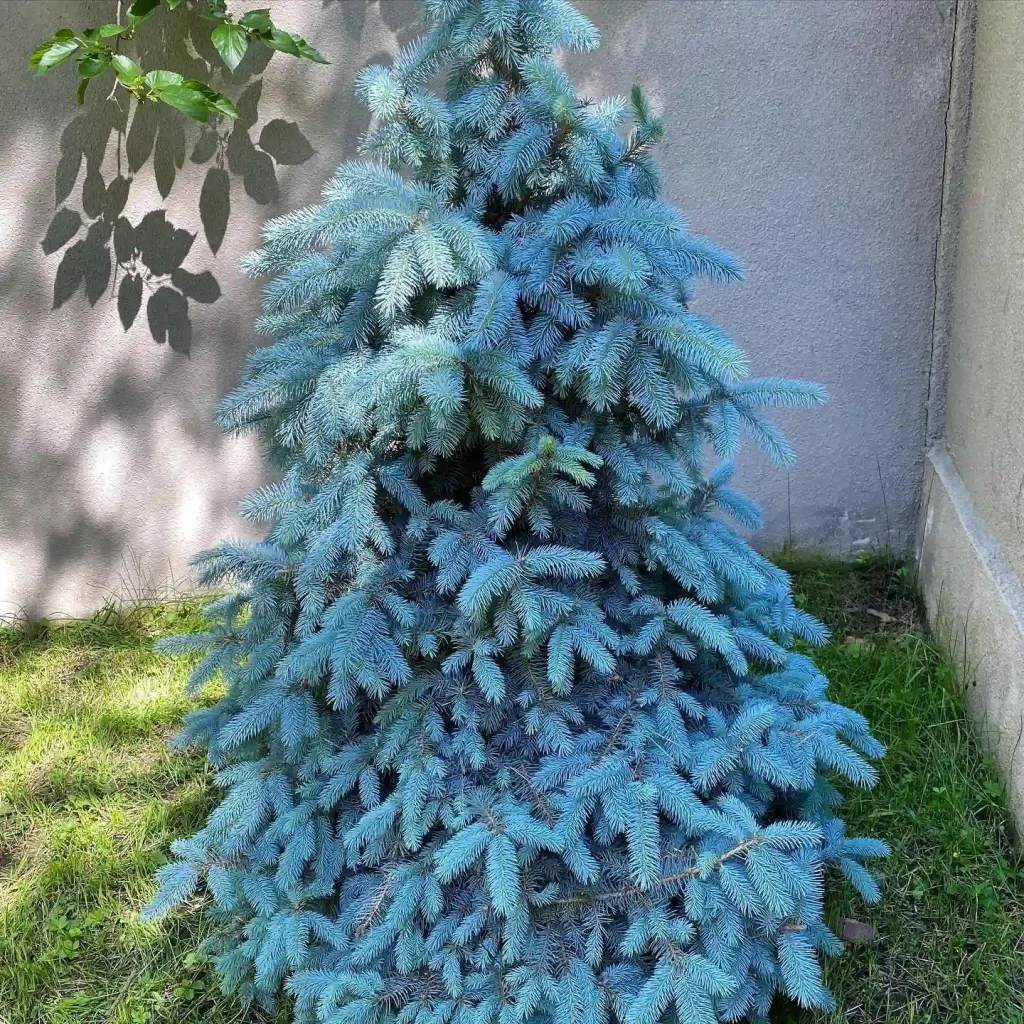
Why are bradford pear trees bad?
Those Bradford pears lining the streets? They sure look pretty in spring with all those white flowers, but let me tell you, they’re a real headache. Every time there’s a decent storm, giant branches come crashing down. It happened twice on my street last year – one took out a mailbox and another almost clobbered a parked car. Plus, my gutters get clogged constantly with their messy fruit. I wouldn’t plant one of those things in my yard even if they paid me! They might be fast-growers, but all that means is trouble down the line.
Are bradford pears edible?
I tasted a Bradford pear once, just a curious nibble, and let me tell you, it was a big mistake. It wasn’t poisonous, thankfully, but it was like trying to eat a mouthful of sour, perfume-flavored pebbles. There wasn’t a hint of sweetness or juiciness, just a dry, bitter punch that left my tongue feeling weird. I’ve heard some folks can stomach them if they’re made into preserves with a ton of sugar added, but honestly, there are so many delicious pear varieties out there, why waste your tastebuds on these?
Are bradford pears invasive?
Absolutely! Those Bradford pears everyone seems to have planted everywhere? They’re like the kudzu of flowering trees. They sprout up all over the place from dropped fruit, crowding out other plants and making it tough for native species to get a foothold. It’s a shame because they look nice in spring, but seeing them popping up in the woods just makes me grumpy. I try to do my part by planting native flowering shrubs in my yard to attract butterflies and bees – they’re way prettier and better for the environment in the long run.
Do bradford pears produce fruit?
It depends! The classic Bradford pear, the one everyone planted for years, was supposed to be sterile. Seemed like a good idea at the time, no messy fruit dropping everywhere. But guess what? Nature finds a way. If there’s another Callery pear variety nearby, even a different kind of Bradford pear, they can cross-pollinate and surprise you with a bumper crop of tiny, hard pears in the fall. They’re not exactly appetizing, but the birds seem to love them, which isn’t great news because then they poop out the seeds all over the place, starting the whole invasive cycle over again. It’s a real mess! Just another reason why I wouldn’t touch a Bradford pear with a ten-foot pole.
Is bradford pear good firewood?
If you end up having to take down a Bradford pear (like I did after a nasty storm took out a big branch), it’s not the worst thing for firewood. It burns alright! It throws off decent heat, especially once it’s been seasoned for a good long while. Six to eight months is what I usually aim for, turning the logs regularly to make sure they dry out evenly. Here’s the thing though, it’s not the top-notch firewood some folks rave about. It burns a bit faster than oak or hickory, and doesn’t have that super long-lasting fire you get with those hardwoods. Still, in a pinch, or for starting a fire quickly, it does the trick. Plus, better to put it to good use than letting it rot in a pile!
Can you eat bradford pears?
I tasted a Bradford pear once, just a curious nibble, and let me tell you, it was a big mistake. It wasn’t poisonous, thankfully, but it was like trying to eat a mouthful of sour, perfume-flavored pebbles. There wasn’t a hint of sweetness or juiciness, just a dry, bitter punch that left my tongue feeling weird. I’ve heard some folks can stomach them if they’re made into preserves with a ton of sugar added, but honestly, there are so many delicious pear varieties out there, why waste your tastebuds on these?
How long do bradford pear trees live?
They may look all strong and healthy in their youth, but Bradford pears? Let me tell you, they’re not exactly known for their longevity. In my experience, they might shoot up fast and fill out a yard quickly, but that brittle wood just can’t hold up for very long. It seems like every other year I hear about someone having to take one down because a branch snapped off in a storm. Most folks say they only live about 15 to 25 years, which makes sense considering how often I see them coming down compared to the old oak across the street that’s been there for who knows how long. Pretty trees, sure, but not exactly built to last. Save yourself the headache and pick something a bit sturdier for your yard!
How to trim a bradford pear tree?
Admittedly, I wouldn’t recommend extensive trimming on a Bradford pear myself. Those weak branches are just asking for trouble, and heavy cuts can encourage even faster growth which defeats the purpose. But, if you’ve got one and just want to tidy it up a bit, here’s what I’ve done in the past:
- Focus on safety first. Always wear gloves and eye protection, and make sure your ladder is stable before going anywhere near the branches.
- Target dead or diseased branches first. These are an eyesore and a hazard, so get rid of them cleanly.
- Thin carefully. If branches are rubbing or seem crowded, remove one of them to improve air circulation. Don’t go crazy hacking away though – remember, these trees want to grow fast!
- Maintain the natural shape. Bradford pears have a rounded, vase-like look. Take out any branches that mess with that shape or hang too low over your head.
- Less is more. It’s tempting to whack off a bunch of growth, but resist the urge. Small, targeted cuts are better than big ones that might stress the tree.
If you’re unsure about anything, it’s always best to call in a certified arborist. They’ve got the expertise to keep your Bradford pear looking its best (which, let’s be honest, isn’t saying much) and avoid any accidents with those weak limbs.
What do bradford pears smell like?
Buckle up, because the smell of a blooming Bradford pear is not for the faint of nose. It’s nothing like the sweet fragrance of, say, lilacs or honeysuckles. Instead, it hits you like a wave of… well, there are a few ways to describe it:
- Rotten fish: This is the most common comparison, and pretty accurate. It’s a kind of sickly-sweet, decaying smell that can be quite overpowering, especially when there’s a whole cluster of trees in bloom.
- Semen: Let’s just say it’s not an appetizing aroma. Some people find this description even more unpleasant than rotten fish!
- Just plain gross: Sometimes, you can’t categorize the smell neatly. It’s a vaguely unpleasant, chemical kind of stink that makes you want to wrinkle your nose.
Honestly, the best way to experience the “joy” of a Bradford pear’s fragrance is to walk by a blooming one yourself. Just be prepared to hold your breath! Thankfully, the blooms don’t last forever, but for that short period in spring, the air can be quite… interesting.
When do bradford pear trees bloom?
Ah, Bradford pear blooms! Those are the ones that blanket the whole neighborhood in a white cloud every spring. For me, it’s a sign that warmer weather is finally here, even if the smell is a bit… much. They’re one of the earliest flowering trees around, usually bursting into bloom in early spring. Depending on the year and how warm it gets, you might see them starting to show off their flowers anywhere from late March to mid-April. The blooms themselves last for a couple of weeks, but if there’s a late frost, it can nip the flowers in the bud (literally!). So pretty, but not the most reliable bloomer.
What states have banned bradford pear trees?
Having dealt with Bradford pears in my yard for years, I can tell you a few states have finally wised up and banned them. It’s about time! As of today, May 2nd, 2024, the following states have the axe to grind with Bradford pears:
- Ohio: They were the first to take a stand, banning the sale of these invasive trees back in January of 2023.
- Pennsylvania: Joining the fight in February of 2024, Pennsylvania also banned the sale of Bradford pears.
- South Carolina: The latest to the party, South Carolina has a ban going into effect this October, making it illegal to sell Bradford pears or any pear trees using the common Callery pear rootstock.
There are rumblings of other states considering similar bans, and frankly, it wouldn’t surprise me one bit. These trees may be pretty in spring, but the trouble they cause just isn’t worth it. Hopefully, more states will follow suit and we can start seeing more native species planted instead.
Are bradford pears poisonous to humans?
The fruit and seeds of Bradford pear trees are not exactly a recipe for disaster, but I wouldn’t recommend a taste test. Here’s the breakdown:
- Fruit: Not poisonous, but definitely not tasty. Imagine a mouthful of sour, perfume-infused pebbles. There’s a reason birds don’t exactly flock to these things.
- Seeds: These contain a small amount of something mildly toxic, but you’d have to swallow a concerning amount to experience any real issues. Still, best to avoid them, especially if you have curious young children or pets around.
Overall, Bradford pears aren’t going to kill you, but they’re not exactly a delightful snack option. There are plenty of delicious and safe fruits out there, so I’d stick to those!
Can goats eat bradford pear leaves?
In my experience, goats will usually browse on all sorts of leaves, but I wouldn’t let them loose on a feast of Bradford pear leaves. Here’s why:
- Not the tastiest: While not poisonous, Bradford pear leaves aren’t exactly a gourmet option. They might be low in nutrients and lacking the flavor goats prefer.
- Potential stomach upset: A large amount of any unfamiliar leaves can give a goat a tummy ache. It’s best to stick to what they’re used to.
- Invasive culprit: Remember, Bradford pears are super invasive. If those leaves end up with seeds in them, and the goats spit them out whole… well, you might be helping spread those unwanted trees.
There are plenty of safe and delicious options for your goats like hay, browse from native trees and shrubs, or even some fruits and vegetables as an occasional treat. Sticking with those is a safer bet than letting them munch on Bradford pear leaves.
Do bradford pears have thorns?
The answer to whether Bradford pears have thorns is a bit of a maybe! Here’s the deal:
- Technically, no: Most Bradford pears, the ones commonly planted in neighborhoods, are cultivated varieties specifically chosen because they lack thorns. This was a selling point, as thornless trees are safer around homes and walkways.
- But wait, there’s more: Bradford pears are a cultivar of the Callery pear, a notorious thorn-lover. Sometimes, rootstock from the thornier Callery pear is used for Bradford pears. These rootstocks can sprout and grow, and guess what? They’ll have thorns!
- Surprise thorns: Even Bradford pears themselves can develop little thorns occasionally, especially if they are stressed, damaged, or growing in poor conditions. They’re not the long, scary thorns you might find on a hawthorn tree, but they can be there nonetheless.
So, the bottom line is Bradford pears are generally thornless, but there can always be surprises. If you’re unsure about a particular tree, it’s best to admire it from afar and avoid close encounters!
If i die, water my plants!

